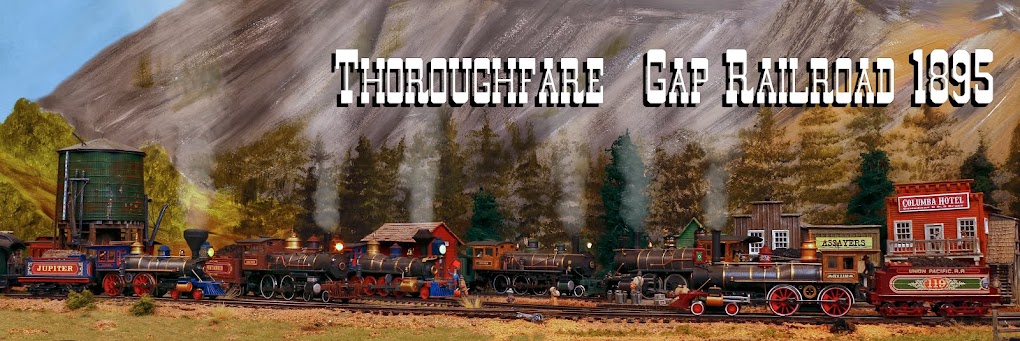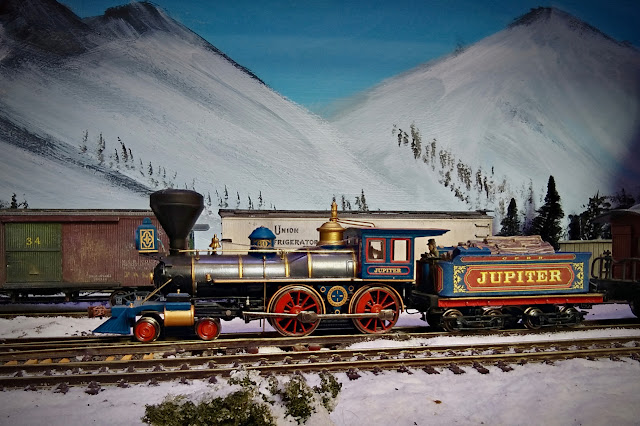So we made the move and have been settling into our new home over the last two and half months. This post is about the decommissioning and disassembly of the layout as it was.
I only brought one (large) piece of the layout with me. In the end, it was a strategic decision. If I only brought half the layout with me, I would have a head start on building some new easily transportable modules and use them with the part of the old layout I brought. That way when I move again, I've got something to take with me and can continue building the new modular version of the Thoroughfare Gap Railroad. In the meantime, I get to run trains and enjoy some of my favourite scenes on the layout for another two years.
The day before we packed it all down the whole family spent the evening running trains for the last time. Everyone got to run their favourite locomotive with whatever cars they wanted. I enjoyed making up trains and aligning switches and just seeing everyone else enjoying the layout.
I wanted some sort of ceremony for the last trains on the layout. So I decided to have a special freight train to pull all the cars off the layout and into the fiddle yard. I used three locomotives, one in the lead and two as mid-train helpers. I'd never lashed up three locomotives together but it worked beautifully. No derailments and it looked great.
Lastly, I ran a special triple-headed 6-car passenger train from Teresaton to the Erewhon Fiddle yard. Again, the trains performed flawlessly and it was a wonderful 'closing ceremony'.
Then my Dad and I spent two days packing it all up. The first day was devoted to taking everything off the layout, trees, buildings, figures, rolling stock and locomotives and carefully preparing it for transportation. On the second day, we build a big plywood box around the portion of the layout that was going to move. It was awkward, because of the switch throw knobs and bits of scenery that protrude out of the layout's baseboard footprint. The final result was solid but heavy.
Our movers loaded everything into a shipping container, which was transferred onto rail for the trip up New Zealand's South Island. I enjoyed that the trains travelled on the train. The great thing is that it all arrived intact and is ready for repopulating.
I've set the layout up in my new space with the buildings, but no figures yet. I've started building the new modules, but more to come on that soon.
 |
The layout looked very bare before pulling apart the benchwork.
|
 |
| The Redwood forest was carefully packed into two large boxes for separate transport. |
 |
| I had made a dedicated carrying case for the locomotives. |
 |
| The section of the layout that made the trip. On the ground, with the structural framing built around it. |
 |
The layout is encased in plywood and ready for shipping.
 | The ravine section was passed on to become a part of another person's layout.
|
|













































.jpg)










